Want your perfect workout program?
Take Quiz12 Worst Muscle Building Mistakes You Might Be Making

Written by Andrew Lenau | ISSA CPT & Sports Nutritionist
Fact checked by Tyler DiGiovanni, BSBM
 FACT CHECKED
FACT CHECKED
The internet is a wonderful thing, with all the information we could ever need right at our fingertips. With the overabundance of information available at the simple click of a button, it can be easy to get lost in a whirlwind of conflicting advice and misinformation.
When learning more about building muscle, it can be challenging to know what is fact and what is a lie. Amidst the sea of fitness blogs, social media influencers, and flashy advertisements promising quick gains, separating truth from fiction becomes daunting.
To save you some time and a bunch of clicking, I put together this guide to break down some of the most common muscle-building mistakes I see and how to avoid them.
The 12 Worst Muscle Building Mistakes
1. Skipping Compound Exercises:
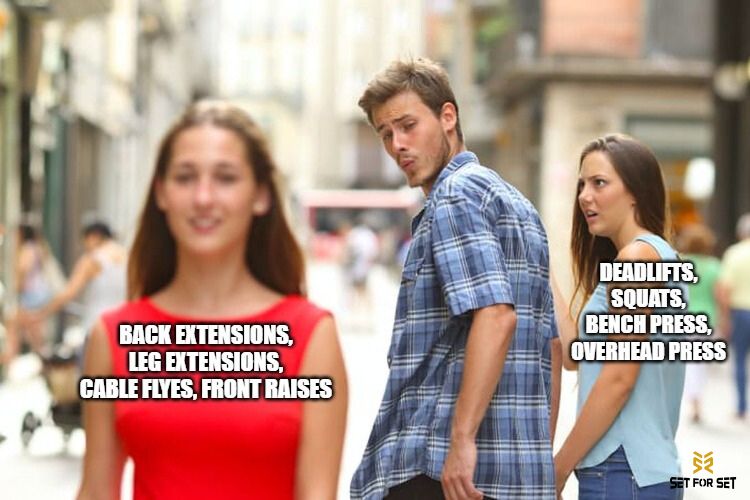
Compound exercises, like squats, deadlifts, overhead presses, and bench presses, form the foundation of any effective muscle-building program. These movements are great at engaging multiple muscle groups simultaneously, leading to potential for greater overall muscle activation and growth.
Unfortunately, too many people neglect compound exercises in favor of isolation movements, limiting their progress and preventing them from realizing their full potential. A study was published in 2017 that came to the conclusion there wasn't a huge difference in muscle gain when it came to compound movements vs single-joint exercises.¹ While this may seem like an argument against compound exercises, the same study found that the multi-joint exercises actually had a greater increase in strength, and a stronger muscle has the potential to be a bigger muscle.
Isolation movements are best done after compound movements when your body is starting to tire and you want to emphasize a particular muscle group more.
Personal Trainer Tip: If you're just starting out in the gym, I recommend hiring a coach to teach you the proper form for the major compound movements. This will give you one less reason to skip compound movements and decrease your risk of injury.
2. Overtraining:

Working out every day may seem like the best and fastest way to see results, and while consistency is crucial for muscle growth, there's a fine line between challenging yourself and overtraining. When I first started training, I thought this, too. I would work out daily regardless of how sore or bad I felt.
Pushing your body past its limits without adequate rest and recovery can result in fatigue, muscle soreness, and an increased risk of injury. The easiest ways to prevent overtraining are to listen to your body's signals, focus on rest days, and allow for adequate recovery between workouts.
Another great option I recommend is incorporating deload weeks into your training program. These weeks are lower intensity and volume than your regular programming to help prevent burnout and promote long-term progress.
Personal Trainer Tip: I know I'm starting to burn out whenever I'm incredibly tired, but I cannot sleep at night. Some signs to look for if you're experiencing burnout are fatigue, mood swings, low motivation, exhaustion, and poor sleep cycles.
3. Not Increasing The Resistance:
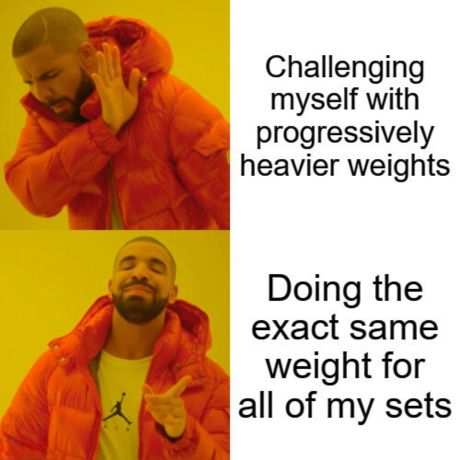
I see too many people go to the gym, do a set, sit on their phones for twenty minutes, then do another set of the exact same weight. These same people never see progress, never increase the weights they do, and wonder why they aren't seeing results.
I understand that pushing yourself can be scary and uncomfortable in the moment. But if you want to see results, you must push your body. Progressive overload is the best way to hit muscle hypertrophy, which is the gradual increase in tension placed on the muscles over time.
Personal Trainer Tip: Most people think the only way to hit progressive overload is to consistently increase weight once it becomes easier. However, multiple ways to challenge your muscles include increased reps, sets, or intensified training techniques. A simple example of this would be doing a set of squats at 135lbs for 8 reps, the next week doing the same weight for 9 reps, the following week 10 reps. While this is a super simplified example, it just shows you how easy it is to incorporate into your workouts.
I would also recommend keeping your break time between sets to a minimum, only resting long enough to catch your breath and let your muscles recover. Your workouts should be challenging every time. If it's feeling easier, time to change things up.
4. Poor Nutrition:
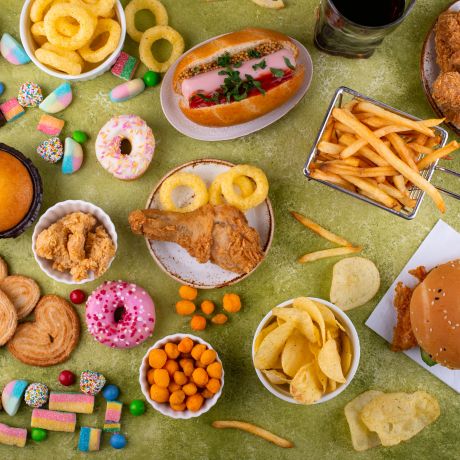
The best part about building muscle? The workouts. You get to go to the gym, hit the weights hard, and then go home once you're done. Unfortunately, building muscle requires much more than just lifting weights; it also demands having proper macro and micro nutrition to fuel recovery and repair.
A diet rich in lean protein, complex carbohydrates, healthy fats, and micronutrients supports muscle growth and optimizes performance, so focus on whole, nutrient-dense foods. For an example, check out our article about what to eat on a 7-day Bodybuilder Meal Plan.
Personal Trainer Tip: Nutrition is so important that I have a couple of tips here. The biggest tip I can give you is to meal prep and prepare ahead of time, which helps to ensure you're meeting your nutritional needs consistently and reducing the risk of eating junk.
If you're just starting, don't go crazy and eliminate everything bad from your everyday life. Instead, start by cutting out one thing at a time and replacing it with a good habit. For example, instead of completely revamping your diet, start by incorporating a protein-rich snack, like Greek yogurt or a protein shake, into your post-workout routine.
This simple change allows you to increase your protein intake without overwhelming yourself with drastic dietary changes.
5. Inconsistent Training:
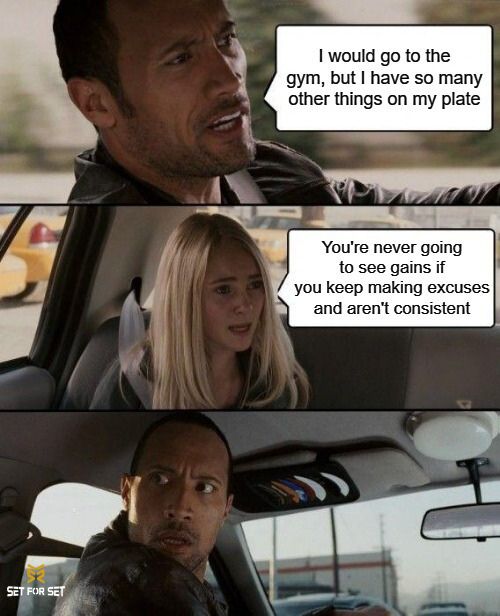
Life can be crazy with jobs, kids, significant others, and the hundred other things we probably need to get done. With all of these things going on, it can be easy to say, "screw this," and not work out like you should.
It is easier said than done, but consistency in your training is vital when building muscle. Establish a schedule that fits your lifestyle and goals to avoid inconsistent training. I also recommend that you focus on having higher-quality workouts over quantity.
Personal Trainer Tip: When life gets extra crazy, I would recommend prioritizing short, intense workouts over longer sessions. This not only removes the excuse of not having enough time but, when done correctly, can also provide more results than a half-assed workout.
High-intensity interval training (HIIT) and circuit training are great options for maximizing muscle activation and calorie burn for these short workouts. We have five Kettlebell workouts available, with the longest taking 43 minutes and the shortest a blistering 15 minutes.
6. Not Tracking Progress:
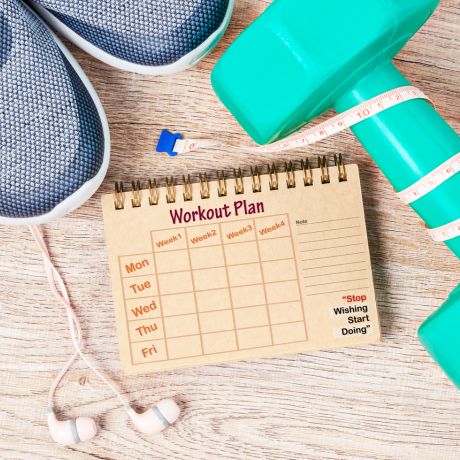
Without tracking your workouts and progress, it's like trying to navigate a maze blindfolded. Given enough time, you might stumble upon the exit, but it's probably going to take you a whole lot longer and be way more frustrating.
Without tracking your workouts and progress, it's challenging to gauge your improvements and make necessary adjustments to your training program. So, keeping a detailed training log allows you to monitor lifts, reps, sets, and progress over time, helping you identify trends, strengths, and areas you need to focus on for improvement.
Personal Trainer Tip: I'm a big fan of establishing a system for tracking your workouts, whether using a smartphone app, notebook, or just a simple spreadsheet, just like the one you can find in our Arnold Split workout.
I would start by recording key metrics such as weights lifted, repetitions performed, and subjective measures like intensity and fatigue. Review your progress regularly and adjust your training program to keep the muscle gains coming. And what better way to do that, then with our proven hypertrophy workout plan below.

Prepare to maximize your gains with our exclusive 12-week hypertrophy training program. Choose between a 4 or 5 day training split and gain 2-12 pounds of muscle over 90 days...
7. Ignoring Proper Form:
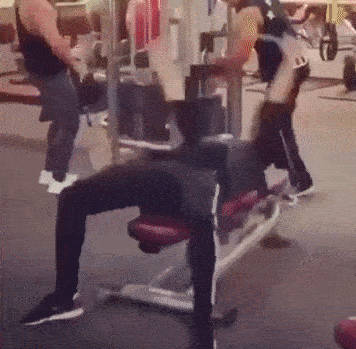
Sacrificing form for the sake of slapping on more 45-pound plates might make you feel like Superman, but believe me when I say that it's really a one-way ticket to Injury City. Not only does sloppy form increase your risk of injury, but it also steals away those sweet gains you're working so hard to achieve.
Poor form can result in muscle imbalances, joint strain, and decreased muscle activation, limiting growth potential. To avoid this mistake, you should focus on having proper form and technique for each exercise.
Start with lighter weights and gradually increase the load as you improve your form and strength. This approach might not feel as impressive as squatting a small car, but trust me, your muscles will thank you for it.
Personal Trainer Tip: Swallowing your pride and using lighter weights to perfect your form will pay off big time in the long run. Remember, it's not about how much weight you lift—it's about how well you lift it.
To the newbies, consider working with a personal trainer to check that you perform exercises correctly and safely. We also recommend checking our extensive list of exercise guides for full breakdowns.
8. Lack of Sleep:

Sleep isn't just for recharging your batteries; sleep is a critical part of the muscle-building process, serving as the time to rest, recover, and grow. During sleep, your body releases growth hormones and repairs damaged muscle tissue, waking you up feeling refreshed and rejuvenated.
If you're someone who likes to burn the midnight oil more often than not, you're doing your gains a disservice. Chronic sleep deprivation is a total party pooper for muscle recovery, performance, and overall health. Trust me, you don't want your muscles feeling like they've been hit by a freight train come morning.
Personal Trainer Tip: To avoid losing muscle gains due to this silly mistake, I recommend focusing on your sleep hygiene and aiming for seven to nine hours of sleep per night. The best advice I can give for building a consistent sleep schedule is to create a relaxing bedtime routine.
I like taking an Epsom Salt bath and reading a book to relax and get my body ready for bed. Others swear by magnesium supplements.
9. Too Much Cardio:

Let me be clear about something, CARDIO DOES NOT KILL GAINS. Cardio can do wonders for your overall health and fitness, but, going overboard can also throw a wrench in your muscle-building plans. Those long cardio sessions might torch calories but can also burn through the precious energy your muscles need to grow and recover. Instead of hitting that second or third cardio session of the day, take some time and let your muscles recover.
Personal Trainer Tip: You want to find that sweet spot between cardio and pumping iron. Sure, get your heart pumping with some cardio occasionally, but don't forget to give your muscles some attention, too.
Focus on resistance training to build muscle and strength, and sprinkle in high-intensity interval training (HIIT) for a cardio boost that won't sacrifice those hard-earned gains.
10. Stress Management:

Chronic stress isn't just a buzzkill for your mood; it's like the Achilles Heel for your muscles, too. When stress levels go through the roof, so do those cortisol levels, triggering chaos in your body. Which definitely is not the recipe for building those sweet muscles.
The best way to combat stress is by taking care of yourself. You can start by adding stress-reducing activities like meditation, deep breathing exercises, or indulging in good old-fashioned leisure time. These simple additions to your daily routine can work wonders for keeping your gains on track and happy. Some people have also turned to supplements like Ashwagandha, which is known to be an adaptogen.
Personal Trainer Tip: DON'T just treat your self-care as an afterthought; make it a mandatory part of your routine. Prioritize the things that make you happy and bring you peace, whether mindfulness practices, relaxation techniques, or hobbies that light you up inside.
I enjoy playing pickleball in my free time, and I can almost guarantee that I'll be more relaxed and carefree by the end of the session. So go ahead and give yourself permission to unwind and recharge.
11. Inadequate Hydration:

What are the upsides of proper hydration? It is essential for optimal muscle function, performance, and recovery. The only downside? Having to pee constantly.
Being dehydrated can impair muscular endurance, strength, and nutrient delivery, reducing your ability to perform at your best during workouts. To prevent this, aim to drink plenty of water throughout the day, especially before, during, and after exercise.
I would also recommend paying close attention to signs of dehydration, such as thirst, dry mouth, and dark urine.
Personal Trainer Tip: I have clients constantly complaining about getting tired of just drinking plain water all the time. I recommend adding sugar-free water flavorings, Mio, or an electrolyte supplement to their water to keep that from happening.
It adds a little excitement to drinking water, especially when trying to drink the daily recommended amount of 3,000 ml for men and 2,200 ml for women.²
12. Relying Solely on Supplements:
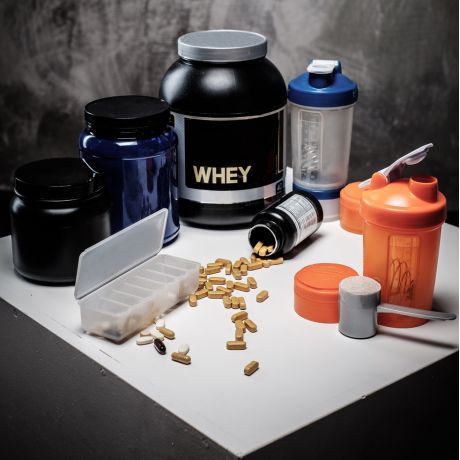
Before I start this, don't get me wrong. I love using supplements as much as the next gym dude, but let's not forget that real food is where the magic happens. Sure, supplements can lend a helping hand in supporting muscle growth and recovery, but they're no match for the micro and macronutrients found in whole foods.
So don't fall into the trap of thinking that chugging protein shakes and popping pills is all it takes to get swole.
Personal Trainer Tip: There are so many supplements on the market that it can be hard to decide what is worth adding to your routine and what is snake oil. For most of my clients, I only recommend taking a few things.
A high-quality protein powder, a comprehensive multivitamin, and creatine monohydrate. Everything else outside of those is nice to have but not necessary.
Outro
Building muscle isn't just about hitting the gym and chugging protein shakes—it's a lifestyle. It's like trying to build a house; you need a solid foundation, a blueprint, and a bunch of sweat and elbow grease.
Now that you've got the tools and the knowledge, it's time to put it all into action. But I won't sugarcoat it for you: this journey isn't always smooth sailing. So, keep grinding, keep hustling, and remember that being on this journey is just as important as the final destination!
Citations:
- Paoli, Antonio, et al. “Resistance Training with Single vs. Multi-Joint Exercises at Equal Total Load Volume: Effects on Body Composition, Cardiorespiratory Fitness, and Muscle Strength.” Frontiers in Physiology, vol. 8, no. 8, 22 Dec. 2017, www.frontiersin.org/articles/10.3389/fphys.2017.01105/full, https://doi.org/10.3389/fphys.2017.01105.
- Meinders, Arend-Jan, and Arend E. Meinders. "How Much Water Do We Really Need to Drink?" Nederlands Tijdschrift Voor Geneeskunde, vol. 154, 2010, p. A1757, pubmed.ncbi.nlm.nih.gov/20356431/.

Also in Blog
Recent Articles
-
All You Need To Know About Cardio WorkoutsApril 14, 2025
-
Calories In, Calories Out Myth: Fact or Fiction?April 08, 2025
-
Cardio Or Strength Training: What's Better For Weight Loss?April 03, 2025
Must Reads
-
Mr Olympia 2024: What to Expect This Year (Oct. 10-13, 2024)September 11, 2024
-
What Can Walking For 1 Hour Everyday Do For You? My ExperienceFebruary 28, 2024
-
The Ultimate "Bro Split" Workout Plan (Backed By Science)August 05, 2023
- Blog
- Exercises
- Workouts
- Meal Plans
- SFS Programs
- Apparel
- About Us
- FAQ
- Shipping
- Warranty
- Contact Us
- Terms & Conditions
- Privacy Policy
- Affiliates
- SFS UGC Policy
- SFS MBG Policy
- Disclosures
- Legal Disclaimer
Sign up to get the latest on sales, new releases and more…
















Andrew Lenau
Author